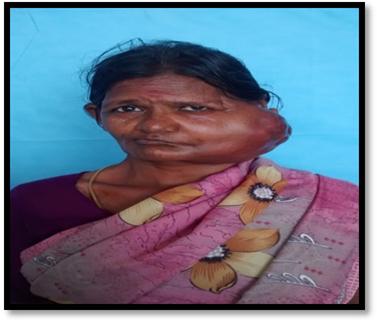
Cyto-Histopathological Diagnosis of Salivary Duct Carcinoma of Parotid Gland– A Rare Case Report
Abstract
Salivary duct carcinoma is defined as “an aggressive adenocarcinoma that resembles high grade breast ductal carcinoma”. It was originally described by Kleinsasser et al in 1968. Salivary duct carcinomas represent only 0.2% of all epithelial salivary gland neoplasms with the most common site being the parotid gland. It can occur de novo or as the malignant component in carcinoma ex pleomorphic adenoma. The tumor usually presents as rapidly enlarging parotid mass associated with facial nerve palsy in 42% of cases, pain in 23% and cervical lymphadenopathy in 35% of cases. Here we report the cytohistopathological and Immunohistochemical diagnosis of salivary duct carcinoma in a 65 year old female presenting as a painful left parotid swelling with left facial nerve palsy
Full Text:
PDFReferences
Cheuk W, Chan JK. Advances in salivary gland pathology. Histopathology 2007; 51(1):1–20.
Ellis GL, Auclair PL. The normal salivary glands. In: Atlas of Tumor Pathology: Tumors of the Salivary Glands, 3rd series, fascicle 17. Washington DC: Armed Forces Institute of Pathology, 1996:20.
Luna M A, Batsakis J G, Ordonez N G et al. 1987 Salivary gland adenocarcinomas: a clinicopathologic analysis of three distinctive types. Semin Diagn Pathol 4: 117-135.
Lewis J E, McKinney B C, Weiland L H et al. 1996 Salivary duct carcinoma. Clinicopathologic and immunohistochemical review of 26 cases. Cancer 77: 223-230.
Afzelius LE, Cameron WR, Svenson C. Salivary duct carcinoma: A clinicopathologic study of 12 cases. Head Neck 1987;9:151-6.
Kleinsasser O, Klein HJ, Hubner G. Salivary duct carcinoma: A group of salivary gland tumors analogous to mammary duct carcinoma. Arch Klin Exp Ohren NasenKehlkofheild 1968.
Brandwein MS, Jagirder J, Patil J, Biller H, Kaneko M. Salivary duct carcinoma (cribriform salivary carcinoma of excretory ducts): A clinicopathologic and immunohistochemical study of 12 cases. Cancer 1990;65:2307-14.
Elsheikh TM, Bernacki EG Jr, Pisharodi L. Fine needle aspiration cytology of salivary ductcarcinoma. Diagn Cytopathol 1994;11:47-51.
Delgado R. Klimstra D, Albores-Saavedra J. Low grade salivary duct carcinoma: a distinct variant with a low grade histology and a predominant intraductal growth pattern. Cancer 1996;78:958-67.
Fu KK, Leibel SA, Levine ML, Friedlander LM, Boles R, Philips TL.Carcinoma of the major and minor salivary glands: analysis of treatment results and sites and causes of failures. Cancer. 1977;40:2882-90.
Yan M, Parker BA, Schwab R, Kurzrock R. Her2 aberration in cancer:Implications for therapy. Cancer treat Rev. 2014;40:770-80.
Etges A, Pinto DS Jr. Kowalski LP, Soares FA, Araujo VC. Salivary duct carcinoma: immunohistochemical profile of an aggressive salivary gland tumour. J Clin Pathol. 2003; 56:914–918.
Refbacks
- There are currently no refbacks.

This work is licensed under a Creative Commons Attribution-NoDerivatives 4.0 International License.
An initiative of The Tamil Nadu Dr M.G.R. Medical University